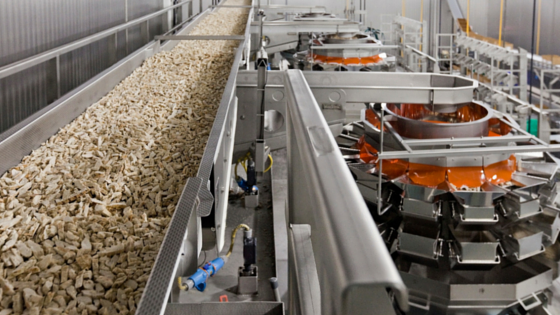The United States Department of Agriculture’s (USDA) Food Safety and Inspection Service (FSIS) recently announced the finalization of new measurements to reduce Salmonella and Campylobacter in poultry and ground turkey products. Let’s review what you need to know as a poultry or turkey processor.
The new standards and procedures (effective May 11, 2016) are a major step in fulfilling the FSIS Salmonella Action Plan. Introduced in 2013, the Salmonella Action Plan is a blueprint to address concerns about Salmonella contamination, which causes an estimated 1.2 million illnesses every year.
FSIS estimates these new measures will prevent an estimated 50,000 illnesses annually.
Starting in May, FSIS will begin assessing whether poultry processors meet the new pathogen reduction standards for ground poultry and chicken parts. FSIS will also post the category status of all eligible establishments subject to the existing poultry carcass pathogen reduction performance standards on its website. Those standards are based on sample results from May 2015 (which is when FSIS began routine sampling throughout the year, as opposed to infrequent sampling on consecutive days) to present.
“This approach to poultry inspection is based on science, supported by strong data, and will truly improve public health,” said USDA Deputy Under Secretary for Food Safety Al Almanza. “The new performance standards will complement the many other proactive, prevention-based food policies that we’ve put in place in recent years to make America’s supply of meat and poultry safer to eat.”
Below is a review of the most significant changes stemming from the new standards and procedures.
- Tougher standards for ground poultry and chicken parts
The risk of contamination increases as poultry is further processed into breasts, wings and ground meat, which comprise 80 percent of the poultry sold in the United States. The new FSIS standards and procedures specifically address ground poultry and chicken parts, as opposed to whole birds.
FSIS will soon use the following standards for maximum acceptable amounts of pathogens present:
- Routine Sampling
In the past, FSIS has conducted sampling on an infrequent and inconsistent basis. The agency determined this method did not provide a reliable assessment of safety enforcement consistency. FSIS will begin implementing routine sampling throughout the year to achieve a more comprehensive assessment of how poultry facilities are addressing Salmonella and Campylobacter.
Poultry processors should use the Hazard Analysis Critical Control Point (HACCP) model for meat and poultry products to ensure they properly address Salmonella and Campylobacter concerns.
- Online assessments
FSIS will soon post processors’ assessments online, including both failing and passing grades. Publicly posting results will increase transparency and create a higher incentive for poultry processors to meet standards.
For additional information on these new measures, read the complete FSIS docket.
To learn how one poultry processor meets and exceeds safety standards, visit our project page for Bell & Evans’ new packaging and processing plant.





